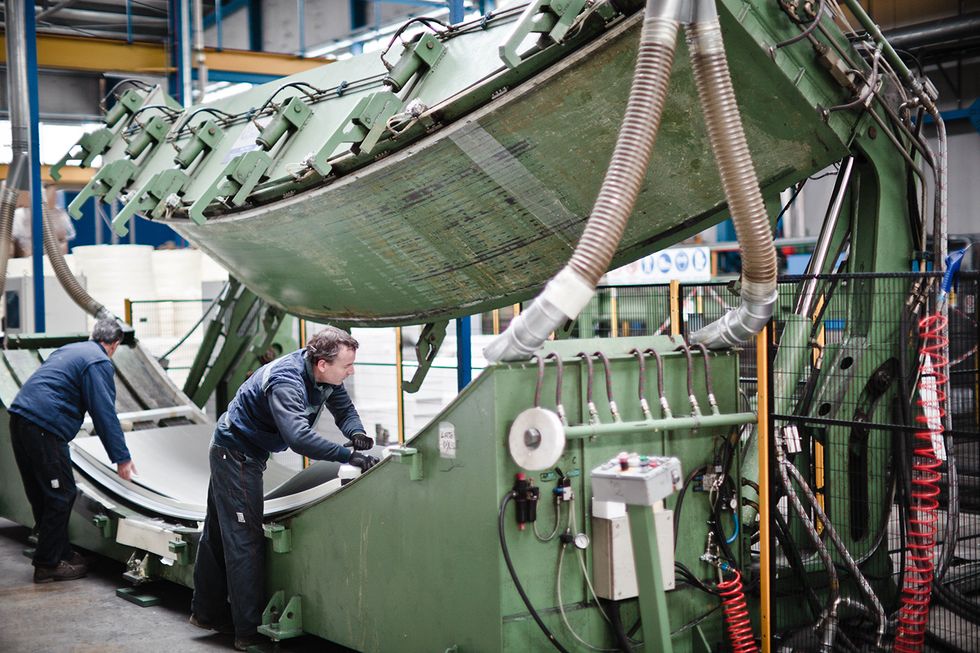Cluster export drives the recovery, with the Northeast in the lead
In the first quarter of 2011, there was a 15% rise with peaks of over 30% in automation, engineering, rubber and plastics. Once again, the doom-and-gloomers have been proven wrong.
In the first quarter of 2011, exports for the 101 main industrial clusters monitored by the Fondazione Edison index, were 16.6 billion euros, up 15% on the same period in 2010, thus consolidating the recovery already registered in 2010 (+12.8%). Nine clusters saw an increase of over 30%, and all of them are part of the automation/engineering/rubber/plastics sector, confirming it to be the "driver" for exports. Twenty-one showed an increase of between 20% and 30%, 23 growth of between 10% and 20%, another 23 registered an improvement of between 5% and 10% and 11 an increase of less than 5%, while only 14 experienced further slight declines. Automation/engineering/rubber/plastics registered the best performance, with a growth in exports of 23.2%. Behind this was clothing/fashion with an increase of 14.5%, hi-tech up 13.4%, home furnishings up 6.2% and food/wines up 3.6%. Among the 20 clusters with the strongest growth, were four others (once again part of automation/engineering/rubber/plastics), for a total of 13 clusters in this area out of a total of 20. They are part of the specialized machinery sector in Treviso (+142,3%), Brescia (+57.5%), Vicenza (39.4%), Bologna (+37.3%), Padua (+31.3%) and Varese (+30.3%); the machine tools cluster in Pesaro-Urbino (+65.4%) and Rimini (+31.3%); taps and fittings in Lumezzane (+31.7%); packaging machinery in Bologna (+29.4%); metalworking in Como (+26.8%); and plastics and rubber in Alessandria (+25.8%) and Iseo Lake area (+23.7%). Thus, engineering clusters have begun moving once again, belying forecasts of an irreversible decline in manufacturing. Among the 20 strongest-growing clusters were also the 5 clusters in the clothing/fashion sector: the Florence leather cluster (+28.3%), the textile/clothing in Perugia (+28.1%), Valsesia (+27.2%) and Biella (+23.8%) and tanned leather in Arzignano (+25.7%).
There were also two food/wine clusters, the one of oils around Florence (26.9%) and Siena wines (+25.9%). However, there were no home furnishings or hi-tech sectors among the 20 strongest. But there was good export recovery in the ornamental stone clusters in Massa Carrara (+21.1%) and Pietrasanta (+17%), as well as the furniture cluster of Livenza near Pordenone (+11.7%), Livenza-Piave near Treviso (+8.5%) and near Pesaro (+8.4%), while those where problems persist included the ceramic sanitary ware cluster in Civita Castellana (-7.9%), chairs in Manzano (-4%) and sofas in Matera (-3.3%). In terms of hi-tech, the cars of Maranello did well (+22.4%) as well as pharmaceuticals in Latina (+19.7%). Still on the negative side were biomedical exports from Mirandola (-3.4%).
Finally, analysis from a geographical standpoint showed a divergence between North and South. Those districts manifesting the biggest increase in exports were the 38 of the Northeast (+17.4%), followed by the 23 in the Center (+14.7%) and 33 in the Northwest (+13.8%); the 7 clusters in the South and islands experienced a drop of -3.5%, due primarily to the poor trend in the tomato products cluster around Salerno (-15.8%), but also the negative performance of the footwear cluster in Casarano Tricase (-29.1%) and sofas in Matera (-3.3%). Cross-mapping sectors and geographical areas showed that the best results were those of the automation/engineering/rubber/plastics cluster in the Northeast, with growth at a full 33.2%. This was followed by the hi-tech and food/wine clusters in the Center (+19.7% and +18.8%), automation/engineering/rubber/plastics in the Northwest (+17.9%), hi-tech in the Northeast (+17%) and clothing/fashion in the Center (+15.9%) and Northwest (+15.8%).


 by Marco Fortis (
by Marco Fortis (